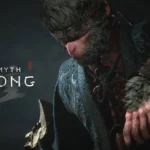Baldurs Gate 3 made a surprising entrance, hitting the gaming scene about a month earlier than Larian Studios initially planned. This move was strategic, aiming to avoid the intense competition that would have arisen from launching too close to Starfield. While both games may cater to somewhat different player bases, this decision was a stroke of brilliance. It ensured that a wide audience was ready to dive into the rich world of Faerûn, savoring its offerings before embarking on interstellar adventures.
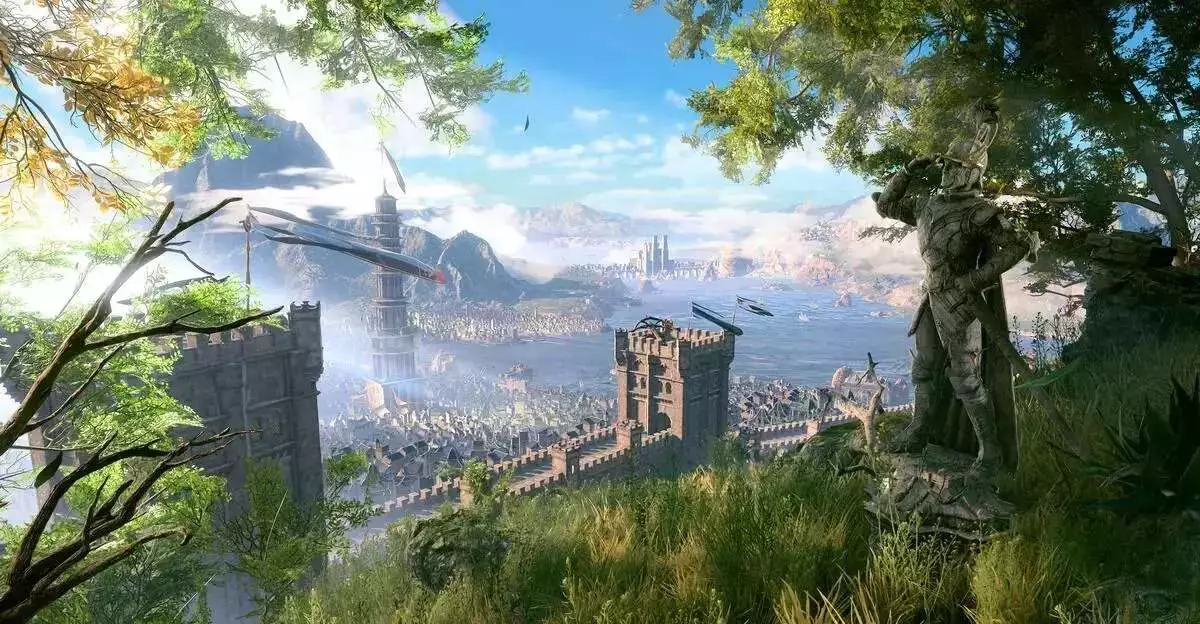
After a handful of theorycrafting videos (and the tantalizing promise of, shall we say, unconventional bear encounters), it rapidly became apparent that Baldur’s Gate 3 was on track to become much more than just a stopgap before Starfield’s release.
The hype train for this game gathered speed quite abruptly, and we’re here to affirm that the excitement is entirely justified. Baldur’s Gate 3 offers countless hours of enthralling gameplay and immersive storytelling. Granted, there are a few minor quibbles, preventing it from claiming the title of a flawless CRPG, as some enthusiasts may have declared. However, it stands remarkably close to perfection, particularly when considering the scope of the game, especially in comparison to its rivals.
Please note that this review is based on an experience of the game as of Patch 1 on PC. Larian Studios has made a strong commitment to addressing various issues in forthcoming patches, and their dedication to refining a game they clearly hold in high regard is genuinely commendable, matching the affection players have for it.
Crafting Your Character in Baldurs Gate 3
Your journey through Baldur’s Gate 3 begins with the character creation system, a pivotal stage in your adventure. At its core, this system offers a choice of twelve main classes, each brimming with unique traits and the flexibility to branch into various subclasses. This vast array of options empowers you to tailor your character’s combat style to your liking, a feature made even more expansive by the allure of multiclassing.
For veterans of Dungeons & Dragons (DnD), multiclassing is a familiar concept. In essence, it allows you to blend more than one primary class, offering endless potential for customization. In theory, you could opt for a level in each of the main classes, although your friends might raise an eyebrow at your choice to create a jack-of-all-trades, master-of-none character.
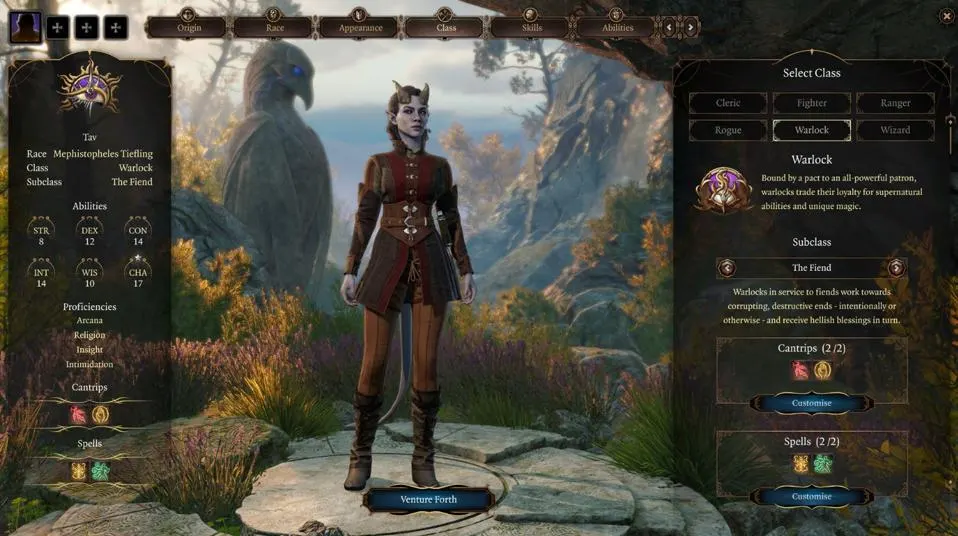
However, amid this abundance of class choices, the finer aspects of character customization, such as altering facial and body features, appear somewhat limited. Across the eleven races available, you’re presented with a mere eight presets for face and body types. While you have some control over details like maturity, freckles, eye color, makeup, and body art, the options for shaping your nose, ears, mouth, and other proportions are disappointingly scarce.
Strangely, the system offers an extensive focus on changing your character’s genitals, even though they are seldom visible during the game. This aspect of customization might leave some players questioning its practicality.
In sum, while character customization in Baldur’s Gate 3 shines in terms of class selection and multiclassing potential, the emphasis on certain features may appear somewhat imbalanced, reflecting a distinct focus on adapting DnD 5th edition to create distinctive character builds.
Exploring Baldur’s Gate 3: A Journey Through Its Dynamic Regions and Choices
Baldur’s Gate 3 unfolds across three key areas: The Wilderness, the Shadow-Cursed Lands, and the titular city of Baldur’s Gate itself. Each of these zones plays a significant role in progressing through the game’s narrative.

In these regions, you’ll discover a plethora of adventures, and the richness of the experience is not solely due to the diversity of characters, companions, and playstyles available. The game meticulously avoids any unnecessary content – everything serves a purpose. Your every action has consequences, from the immediate situation you find yourself in to the far-reaching effects that continue to shape your story throughout the game. There’s no filler here; every interaction can influence your tale in unexpected ways.
If Shadowheart’s rigid beliefs don’t align with your character, you can guide her on a transformative journey. Help her confront her past and enable her to forge her own path in life. Baldur’s Gate 3 is more than just a game; it’s an immersive adventure where your choices truly matter.
Companion Dynamics and Freedom in Baldur’s Gate 3
In Baldur’s Gate 3, the attention to detail is striking, with even the smallest character or item drawing your companions’ comments. If your gear clashes with their values, expect them to voice their concerns, potentially affecting your relationship. Conversations are far from static, shining brightest when your companions react to your actions, such as presenting their favorite flower. Your choices, whether they make someone happy or angry, are remembered, particularly crucial for the romance aspect.
The game grants you considerable freedom in romancing characters. You can start this journey early by aligning with a companion’s values. To succeed, pay close attention to their worldview. Consistently upsetting them can ruin your chances of romance or even lead to them leaving your party. This dynamic approach makes characters feel like active participants, not narrative pawns.
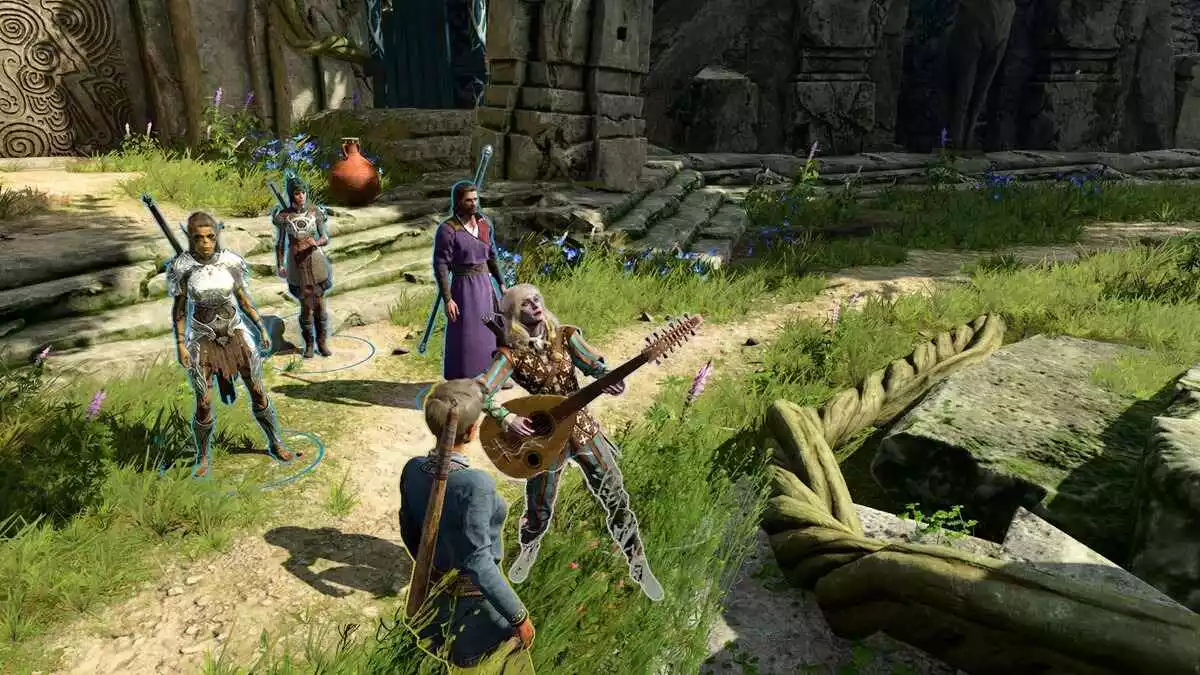
Baldur’s Gate 3 revolves around the companion system, with each companion intricately tied to the story. There are 10 main companions to choose from, but you can only have three (or four if you’re one of them) at a time. They sport diverse and sometimes morally complex personalities. Guiding their growth and influencing their personal quests is a rewarding aspect of the game.
You can significantly alter your companions’ paths, even contrary to their natural tendencies. Turn Astarion from selfish to generous or guide Shadowheart away from close-minded zealotry. The game’s ever-changing nature extends to your companions, right up to the final choices in your playthrough. While the world remains familiar, you’re free to relate to it as you wish.
Your companions aren’t clay to be molded, though. They retain their own judgments of you and the world, adding depth to their characters. This authenticity is further enhanced by exceptional motion capture and voice acting.
Storytelling Quirks in Baldur’s Gate 3: Navigating Act 3 and Embracing Side Adventures
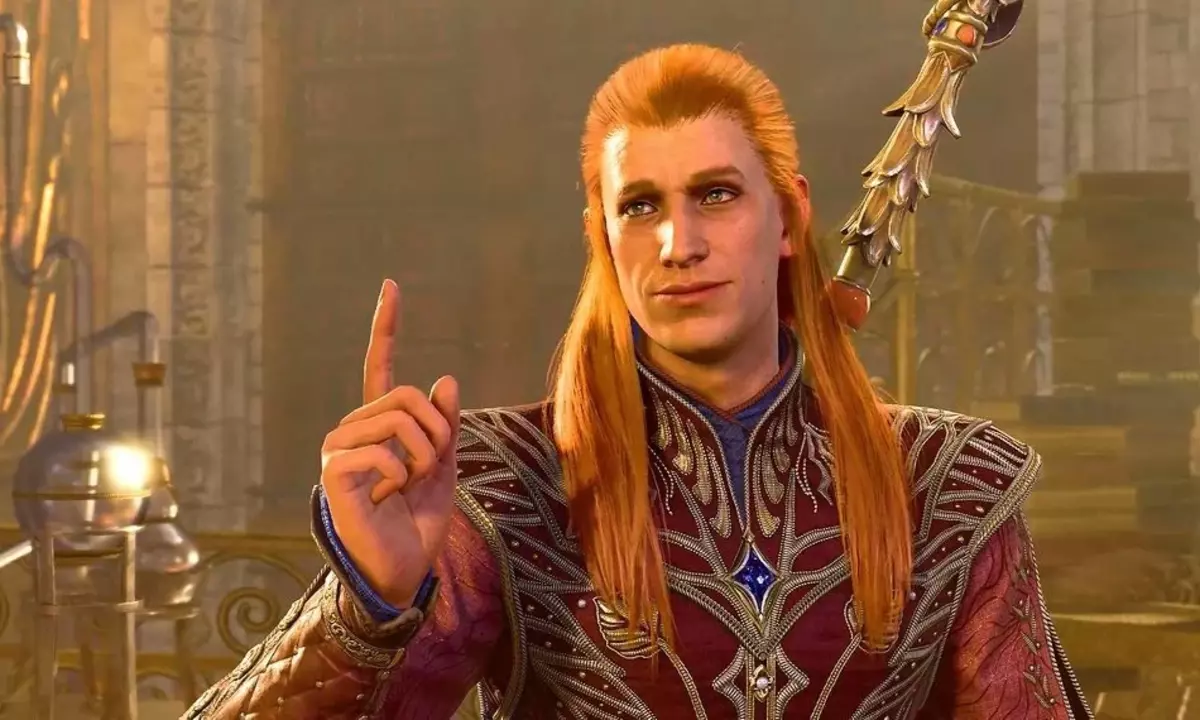
Despite its impressive storytelling, Baldur’s Gate 3 isn’t without a few issues that might bother some players. These problems, while relatively scarce considering the game’s vast scope, have the potential to dampen the experience for perfectionists. The most glaring of these issues can be found in Act 3, where a comparative lack of polish might be hard to overlook. However, the developers are aware of these shortcomings and have expressed their intent to address them in future patches. An improved Act 3, on par with the previous two acts, would be the icing on the cake, eagerly anticipated by players for future playthroughs.
Another inconsistency lies in the depth of characters, particularly the villains, in Act 3. There’s a noticeable contrast between them and the way the main villain of Act 2 seamlessly integrates into the narrative. The latter’s connection to the places you visit and the characters you encounter makes for a more natural and engaging experience. Yet, Baldur’s Gate 3’s storytelling isn’t confined to its main acts. Much of its brilliance emanates from meticulously crafted side adventures. These optional quests provide crucial context to the main story, especially if you’re averse to delving into the many scattered books and lore-filled notes throughout the game’s environments.
One captivating side adventure involves a predatory hag, first introduced in Act 1. Her story intertwines with the broader narrative, as other characters in the game are aware of her presence. You can uncover clues about her whereabouts, her predatory habits, and how to put an end to her reign of terror. Multiple approaches are available during your initial encounter with her, and the choices you make will be remembered in Act 3, provided key characters survive. Optimal decisions in your first encounter can make your life easier, but if not, you’ll be left grappling with the consequences. This exemplifies the butterfly effect that constantly looms over your actions in this game.
Baldur’s Gate 3: A Dynamic Narrative Adventure

Baldur’s Gate 3 doesn’t follow a typical gameplay loop; instead, it offers a continuous narrative with countless branching paths. While you’ll encounter the same initial quests in every playthrough, your choices unlock new quests and may close off others, especially if you make enemies along the way. The game grants you the freedom to confront and even kill almost any NPC, but be ready for the consequences. Some areas are perilous for such actions, as they tend to have more allies than you can handle, at least in the early stages. Combat might seem tough for newcomers to CRPGs at first, but it becomes more manageable as you acquire new skills and better gear. While single-player offers plenty of enjoyment, multiplayer adds a new dimension to both combat and dialogue, enhancing the overall experience.
The Art of Persuasion and Diverse Combat in Baldur’s Gate 3
Baldur’s Gate 3 offers a unique thrill not only in battles but also in the art of negotiation. If you designate one character with high charisma and persuasion skills, you can often talk your way out of tight spots and even convert potential foes into allies. This offers an alternative path for those who favor wits over brute force, but avoiding combat entirely means missing out on much of the game’s excitement.
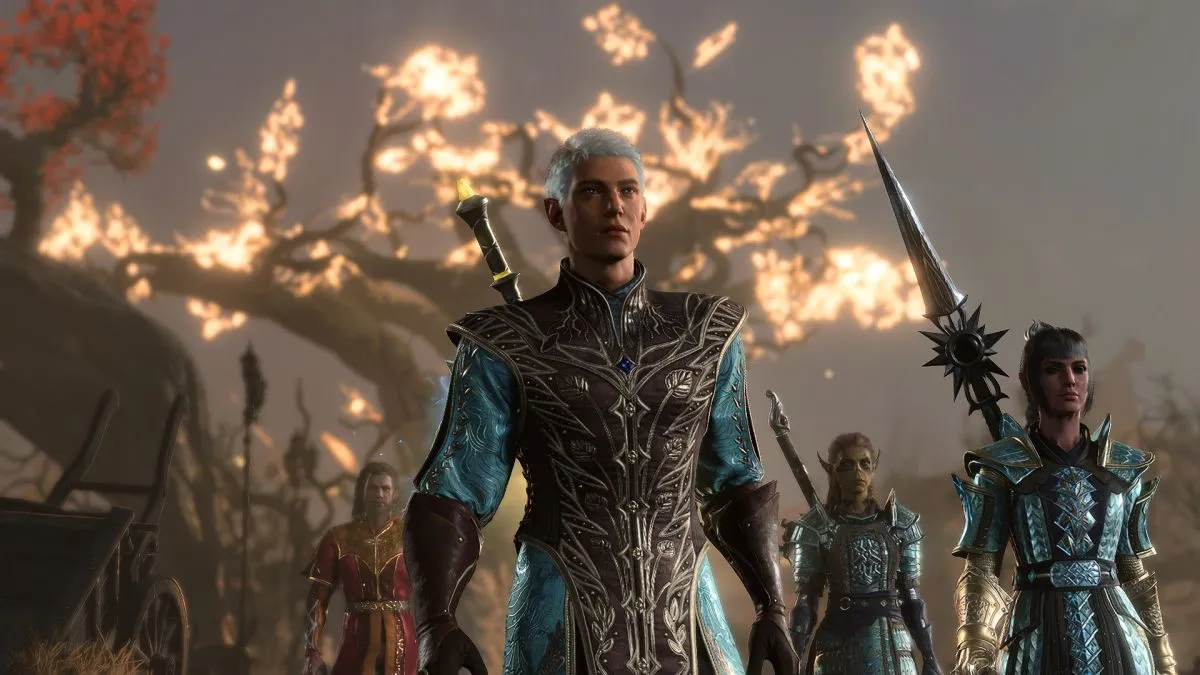
The beauty of Baldur’s Gate 3’s combat lies in its flexibility. You’re not confined to a single approach; you can choose from stealth, various magical abilities, shapeshifting, or raw power, depending on your preference.
Moreover, the combat options extend beyond your characters’ inherent abilities. You can cleverly manipulate the environment to your advantage. Discover flammable items for controlled explosions, toxic substances for crowd control or damage over time, and structural weaknesses to create hazards for your enemies. The options are endless, constrained only by your creativity. Countless YouTube videos showcase this creativity, from rigging an entire Goblin Camp with explosives to trigger a chaotic chain reaction that obliterates everything in its path.
ALSO READ: Moving Out 2 Review – Epic Co-op Furniture Frenzies & Hilarious Adventures
Multiplayer Magic in Baldur’s Gate 3: Unleash the Chaos and Cooperation
While a single-player campaign offers its own brand of fun, delving into multiplayer in Baldur’s Gate 3 adds an entirely new layer of excitement to both combat and dialogue. It’s not just about strategic collaboration; it’s also about the mischief you can brew together, resulting in reliably hilarious outcomes.

In multiplayer, you can tap into the combined strategic thinking of multiple players, opening up a world of possibilities, both virtuous and nefarious. You can align your moral compasses or take different paths, sparking real drama within the group. It’s like having your own small DnD (Dungeons & Dragons) party within a game, without the agonizing wait for a Dungeon Master’s guidance, which often takes far too long. While players can vote on specific dialogue options, the host always has the final say, ensuring that the game remains engaging and unpredictable.
Endless Adventure, Some Navigation Quirks
In essence, Baldur’s Gate 3 offers a remarkable array of choices, ensuring that no two playthroughs are ever the same. You’re not confined to a specific path once you start, creating a genuine sense of adventure. However, there are some organizational issues that mar the experience. The quest journal, for instance, can be a confusing tangle of overlapping objectives, sometimes categorized in ways that defy logic. Some quests from previous regions may vanish after completing certain objectives, leaving you uncertain about which ones will be affected. Furthermore, the journal suffers from bugs, with quests disappearing prematurely, a problem we hope a dedicated patch can rectify soon.

Despite these journal woes, it’s not an essential guide to your Faerûn adventure, and these shortcomings can be overlooked in light of the story’s complexity. Yet, other bugs affect your character’s behavior. Significant character development moments can lead to permanent personality changes. While this showcases character depth, it sometimes results in characters making comments about already-resolved issues or expressing loyalty to characters they no longer support. These immersion-breaking moments are challenging to ignore.
Considering the ambitious scale of the game, some bugs are expected, but it’s surprising how few we encountered given its vast scope.
Balanced Gameplay with Room for Improvement: A Look at Baldur’s Gate 3
The gameplay in Baldur’s Gate 3 is satisfying, but there are certain aspects that appear somewhat basic and could use further development, like the alchemy crafting system. Personally, I found it underutilized since most craftable items were easily obtainable through looting or trading. While it’s a nice feature to have in a pinch, a deeper crafting system, including the ability to craft weapons and armor, would have been a welcome addition. However, it’s important to remember that in a game as vast as this, we can’t expect everything. The game still boasts an array of enticing loot in the form of unique items earned through specific tasks. Furthermore, the support for the modding community could potentially bring more depth and content to the game in the future.
Visual Brilliance in Baldur’s Gate 3: The Beauty of the Divinity 4.0 Engine
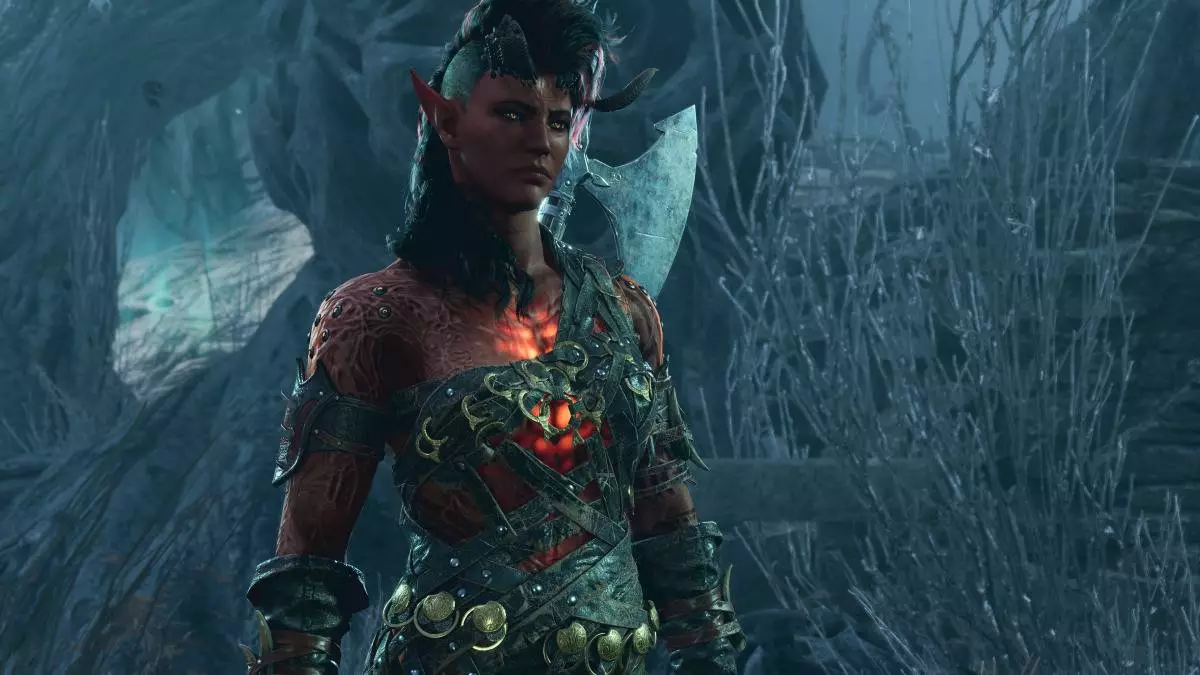
Larian Studios made a bold choice by employing their Divinity 4.0 engine for Baldur’s Gate 3, an updated version of the engine used in Divinity: Original Sin II. Initial concerns that the game might appear dated for its 2023 release were swiftly dispelled. Baldur’s Gate 3 showcases an astonishing level of detail, with environments that dazzle. Cracked plasterwork in old houses, the nuanced variations in stonework, tiles, and wooden structures, all exude an authentic aged appearance. The absence of noticeable repeated patterns and the handcrafted feel in most designs reflect the care and dedication put into this world. While some minor items like spoons and plates can feel blocky and uninspired at times, they are mere specks in a world as rich as this one.
Characters in the game truly shine when you see them up close, expressing emotions that feel genuinely authentic.
Textural Brilliance: Armor, Weapons, and Character Details in Baldur’s Gate 3
The handling of textures in Baldur’s Gate 3 is truly remarkable, particularly in the realm of armor and weapons. There’s a tangible distinction between armors made of leather and hide versus those primarily fashioned from metals. The former exude a subdued, fitting tone, while the latter glisten brilliantly under light sources. This attention to detail extends to skin and hair textures, providing ample variation, making every encounter with an NPC feel like meeting a unique personality. There are rare instances of basic templates for High Elves with different clothing, but these are infrequent enough to be minor concerns.
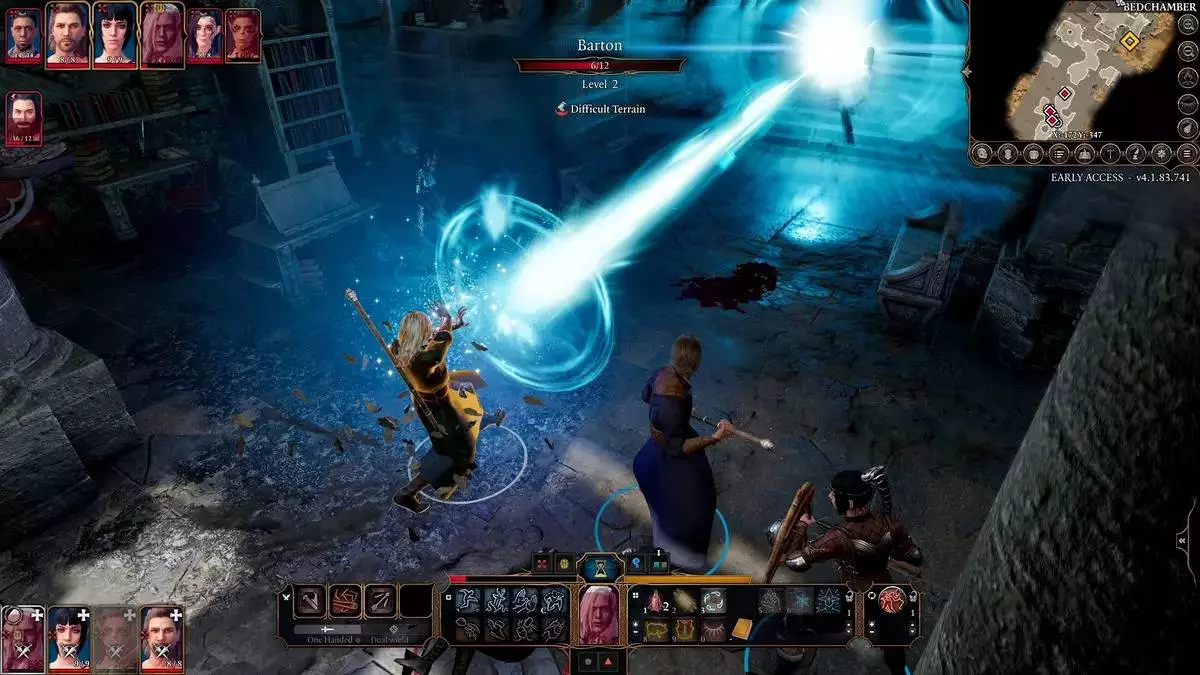
A subtle yet often overlooked graphical feature is the presence of dirt and blood on characters’ faces after a day of travel and combat, serving as a reminder to set up camp and rest frequently.
Characters truly come to life when seen up close, their expressions conveying genuine emotions. Nearly every unique character’s movements are captured through motion capture technology, including those you might only briefly encounter. While the origin characters who become your companions benefit the most from this process, it’s always a pleasant surprise to encounter isolated characters brought to life in a memorable way through the same technology. Their facial expressions are compelling, and their body language is among the best ever seen in a game.
Eloquent Voices and Expressive Characters in Baldur’s Gate 3
The attention to detail in Baldur’s Gate 3’s visual representation of characters finds a harmonious match in the realm of voice acting. Almost every NPC, and yes, even the animals, boasts their own unique voice, and the quality of the performances is truly outstanding. Rarely will you encounter a performance that feels lackluster or uninspired; it’s evident that Larian Studios put in the effort to find the right voices for the job. The main companions, in particular, deliver convincing performances, but as with motion capture, you can expect to feel like you’ve encountered real personalities with almost anyone in the game. Personal favorites include the hag (aka Auntie Ethel), Kith’rak Voss, and Volo, but nearly every character deserves praise.
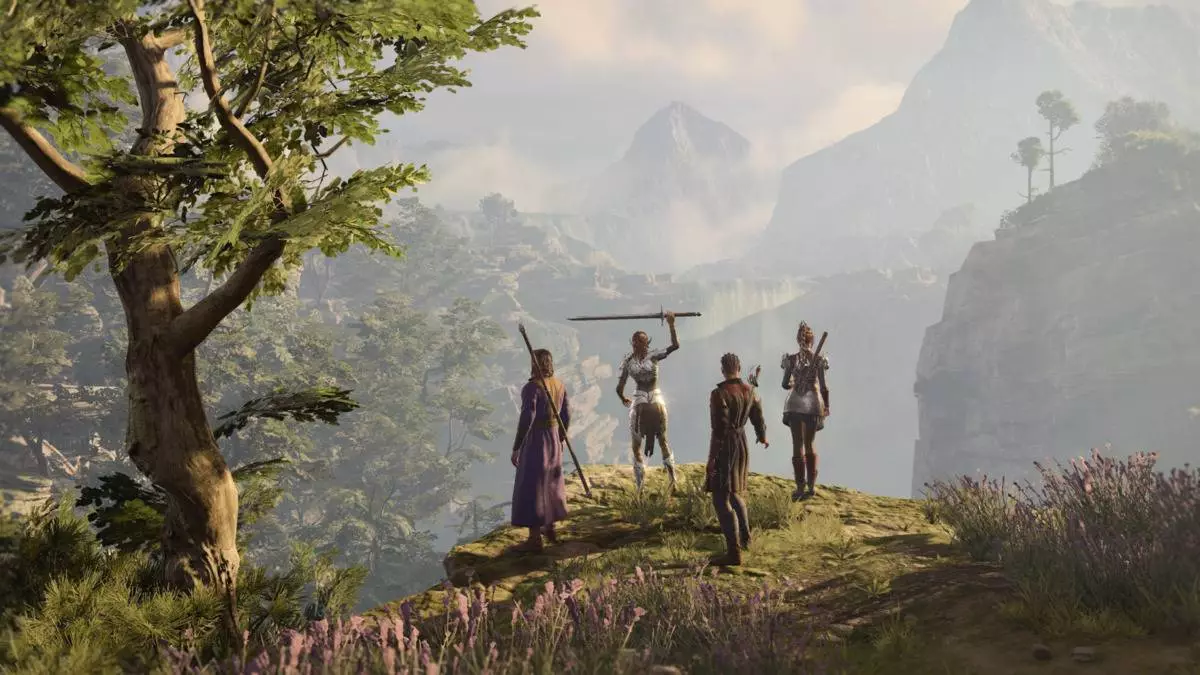
However, some graphical limitations, unfortunately, often relate to your own character. Your character, for obvious reasons, lacks its own voice acting, apart from a few generic observations made in one of the limited voices available during character creation. This isn’t a significant issue, as the numerous dialogue options help you feel like you’re truly inhabiting your character. Nevertheless, facial expressions can be jarringly inferior to other characters. Your character often appears surprised, with unnaturally raised eyebrows in most encounters, even smiling during tragic scenes, which can break immersion.
The openness displayed by Larian Studios in addressing community concerns instills confidence that these issues can be resolved over time. While they are not dealbreakers, they are worth mentioning in a game that otherwise thrives on immersive technical features. Although there are engine limitations, it feels like Larian has extracted every ounce of potential to bring the world and its inhabitants to life. The characters you meet in this game are bound to leave a lasting impression.
Baldur’s Gate 3: A Gamble That Paid Off
Larian Studios took a significant risk when they released Baldur’s Gate 3 in early access nearly three years before the full launch. Despite lacking a clearly defined release date until 2023, many players were willing to invest £50 in an incomplete version, contributing to the game’s refinement and expansion based on community feedback. By most accounts, this gamble has been an unqualified success. However, few could have anticipated just how well Baldur’s Gate 3 would perform. When your game’s impact leads other developers to somewhat begrudgingly admit that you’ve set unrealistic expectations, it’s a sign that you’ve done something truly remarkable.
This isn’t to say that all other games pale in comparison. Different games excel in various ways, tailored to their unique objectives. Yet, in the realm of CRPGs, Baldur’s Gate 3 has raised the bar and inspired other studios to reach for similar heights. Its total absence of paid extra features and a relatively short list of problems for a game of its scale is both refreshing and impressive. We can only hope that this marks the beginning of a trend.
Verdict
In the enchanting world of gaming, Baldur’s Gate 3 stands tall as a luminous testament to what a passionate and skillful team can achieve when they heed the echoes of their community. This team, a harmonious blend of visionaries, actors, technical wizards, and more, meticulously selected the finest talents to weave their magic. Their masterstroke has birthed an indelible journey, one that transcends mere gaming and bestows more value than opulent productions with bottomless coffers. The community, an unwavering chorus of applause, has resoundingly voiced their gratitude. In this radiant tale, words fail to encapsulate the wonder, leaving us with just one earnest plea: “Give us more of this unparalleled masterpiece, for it’s a treasure worth cherishing.” Read Latest Games News & Updates Click here.
FAQs – Baldur’s Gate 3
What does Baldur’s Gate 3 entail, and when did it become available?
Baldur’s Gate 3 is a highly anticipated CRPG (Computer Role-Playing Game) developed by Larian Studios. It was released earlier than originally planned, approximately one month ahead of schedule, partly to avoid competing with Starfield.
What makes Baldur’s Gate 3 worth playing?
Baldur’s Gate 3 offers captivating gameplay and immersive storytelling, providing countless hours of entertainment. It has received considerable hype for its depth and quality.
What can players expect from character creation in Baldur’s Gate 3?
The game offers a wide range of choices for character creation, including twelve main classes and the option to multiclass. While class selection is diverse, fine details for customizing facial and body features are somewhat limited.
How is the storytelling in Baldur’s Gate 3?
Baldur’s Gate 3 features a rich and compelling narrative set in three main regions. Every choice you make has consequences, and the story is driven by your decisions, making it highly engaging.
What is the companion system in Baldur’s Gate 3?
The game has 10 main companions, each with their own personalities and quests. You can influence their development and even change their disposition and choices based on your interactions, creating dynamic and immersive relationships.
What is the gameplay like in Baldur’s Gate 3?
The game offers a continuous narrative with numerous branching paths. Combat and dialogue choices are diverse, and you can choose to resolve situations through persuasion or combat. The game encourages creative problem-solving.
Are there any issues with the game’s interface or mechanics?
Some players may encounter issues with the quest journal organization and character behavior. These issues are being addressed by the developers in subsequent patches.
How does the game handle graphics and sound?
Baldur’s Gate 3 uses the Divinity 4.0 engine, offering impressive visuals and detailed character textures. The game’s characters come alive with motion capture and outstanding voice acting.
What are the limitations of the game’s graphical features?
While the game excels in character detail, your own character’s facial expressions and animations may be less polished compared to other characters in the game.
Is Baldur’s Gate 3 worth the investment?
Baldur’s Gate 3 is considered a successful and immersive CRPG experience that justifies the early access investment. Larian Studios’ commitment to the game and community feedback is commendable, making it a promising title for the future.

